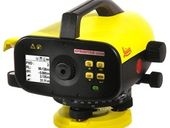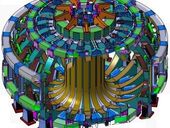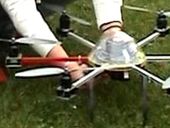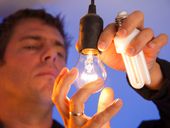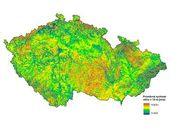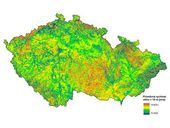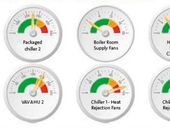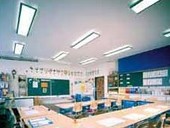The article introduces the testing procedure of levelling instruments in construction. Generally described testing and validation procedure of levelling instruments (optical and digital as well) is supplemented by results and evaluation of four selected levelling instruments (Sokkia C40, Geo Fennell NO.10, Spectra AL100 a Leica Sprinter 150) used to work in technical levelling.
Archiv článků od 17.12.2012 do 1.7.2013
List of all companies that offer recycling of photovoltaic modules in the Czech Republic is included. Already 9 companies is on the list, of which 4 already received marketing authorization, 5 more likely to gain the authorization in the coming days. Contract can be concluded even with a company that has not received the marketing authorization yet.
In order to assess the diffusion rate of solar and wind power plants in the Czech residential sector, we analyse data on licenses for business in the energy industries. We arbitrary set the maximum installed capacity for installations on residential roofs on 10 kWe and find out that the current number of such installations corresponds to 0.5 % of inhabited family houses in the Czech Republic, with most installations being in the Pilsen region and least in the Karlovy Vary and Liberec regions.
When compared with the overall development of solar power plants, it shows that the installations of up to 10 kWe accounted for about 35 % of all the solar power plant installations, but only for 1.9 % of the total installed capacity. Micro wind turbines are up to now not very expanded; we found only 20 installations of micro wind turbines.
Fusion powered electricity will be an important part of the energy sector in the future. The European Fusion Development Agreement (EFDA) has published a roadmap which outlines how to supply fusion electricity to the grid by 2050. The key facilities of the roadmap are the International Thermonuclear Experimental Reactor ITER and the Demonstration Fusion Power Plant DEMO. The article brings in three parts physical basics of nuclear fusion and fusion technology, a short description of the Czech Republic's participation in fusion research and an overview of the key fusion projects.
The question of reliability and at the same time quality of security systems is the most important criterion for selecting a particular type of security. The most dangerous from this point of view are perimeter systems that virtually in all modifications and technologies are greatly subject to the influence of external conditions and distractions. Due to this fact many false alarms quite often prevents their actual use (at least in civilian areas). This is why we (in the Laboratory of security systems Faculty of Engineering CZU) were searching for a way how to increase the efficiency of employment of the discussed perimeter systems. We wanted to enable problem-free utilization in the commercial area at a moderate price if possible. The solving of the problem by way of minimizing false alarms failed when changed to a different physical principle of detectors. Therefore we chose a different approach – we made a perimeter system with movable and automatic alarm verification.
The lighting research was carried out in 12 European countries in the fall 2012. The research was focused on several lighting aspects in households, ie. the most used types of bulbs (incandescent bulb, compact fluorescent bulb or LED bulb). Also, the location and usage of different types of bulbs and consumer behavior were investigated.
Setting out and control of a vertical direction belong among often solved tasks in civil engineering. In order to setting out a plumb line the optical plumbing instruments are used. The most commonly used instrument for this activity is Zeiss PZL (Zeiss Zenitholt PZL 100). This contribution describes the procedure and results of testing according to STN ISO 17123-7: 2010 Optics and optical instruments – Field procedures for testing geodetic and surveying instruments. Part 7: Optical plumbing instruments.
One of the reasons why building with almost zero energy consumption does not meet the expectation is that it may be too complicated. Another factor is that the project may be too optimistic, and other unforeseen factors, such as office equipment, which actually dominates the energy balance of the building.
While an actual map of the mean wind speed at the height of 100 m above ground (i.e. at the height of state-of-the-art "large" wind turbines) was created and published in 2007 – 2008, only less accurate older data were available for the conditions closer to the ground. This gap is filled by presented article and concurrently published map of the wind speed at the height of 10 m. Furthermore, other important aspects of wind conditions over the area of the Czech Republic are discussed. These results can form a useful tool for those interested in construction of small wind turbines.
To calculate the average wind speed at a height of 10 m above the surface the same procedure and the same input data as for “wind map” at a height of 100 m above the ground were used. The resulting wind map is a synthesis of three calculation models used for long time at the Institute of Atmospheric Physics AS CR: VAS, WAsP and PIAP.
The European Union is committed to reducing energy consumption in the built environment. Since the heating, ventilation and air conditioning (HVAC) represents approximately 11% of the total electricity consumption in Europe, these systems are an important part of the commitment of the EU. In this article, we discuss two specific aspects of HVAC energy efficiency, both are based on that understanding how the commercial buildings work in real life is the first step towards reducing energy consumption.
Today's world is connected with use of computer technology. Of course, there is an increase of security threats that are related to computer and computer networks. It is not just about IT security systems, but in terms of security objects and their parts into which access is restricted whether it be for any reason. Therefore, the user identification is one of the most important parts of the security access systems. To work on the development of functional, reliable and yet not too financially demanding system, is needed to be familiar with existing systems.
Czech legislation introduced special regime of responsibility and funding of recycling of the photovoltaic modules installed until 2012. The special regime was motivated by the fear that PV modules will remain in the field at the end of life as its owner will go bankrupt controlled.
For every other electronic devices their producers are responsible for recycling since 2005. For photovoltaic modules the producers responsibility in the Czech Republic starts from 2013. For the modules installed until 2012 the owners are responsible for recycling. Before June 30 2013 the owners must enter into contract with a recycling company dedicated to photovoltaic modules recycling, which must be founded by at least four manufacturers of electronic devices (not necessarily photovoltaic modules). The recycling company have to estimate a fee for recycling despite of that no company in the Czech Republic has experience with large-scale recycling of photovoltaic modules. The owners then must pay the fee between 2014 and 2019. Regarding 30-year lifetime of PV modules the recycling will only rarely occur before 2040.
There is no obligation to deposit the collected fees on a blocked account nor another restriction for its use. This implies there is fear the recycling company will go bankrupt controlled. The supposed problem was not solved it was only shifted to another level.
In the past there has been several large blackouts in the world. Risk of such blackout reportedly increases with increasing of share of renewable energy sources in energy mix. In fact neither of previous blackouts were caused by renewables. Main primary causes are age of transmission system components or operator error. Frightening with several days outage caused by renewable sources is exaggerated.
Czech Technical Standard ČSN EN 12464-1 entered into force on April 1st. This standard is closely related to healthy light. It establishes rules for correct (and healthy) illuminating of workplaces. A number of changes occurred in the standard, small but important. Since the analysis throughout the standard would be impossibly large, I will assume that readers know the "old" version, and I will focus mainly on the kind of changes.
Czech Technical Standard ČSN EN 12464-1 entered into force on April 1st. This standard is closely related to healthy light. It establishes rules for correct (and healthy) illuminating of workplaces. A number of changes occurred in the standard, small but important. Since the analysis throughout the standard would be impossibly large, I will assume that readers know the "old" version, and I will focus mainly on the kind of changes.
Comparison of price developments in eight EU countries shows very interesting facts. Eg. for common Czech household with consumption 2.5-5 MWh / year electricity price increased in 2011 to 229% of the price in 2001. While the same household in Germany to only 115%. While the current price is very close (CR 3.07, Germany 3.50 CZK / kWh).
Lighting in the school premises is not fundamentally different from the illuminating similar sites in other areas of human endeavor. School classroom is basically a big office. There’s no difference between offices and cabinets, headmaster's office, staffroom. Workshops, laboratories, gymnasiums in the school kitchen and dining room are exactly the same requirements for lighting as in public restaurants. It remains one speciality - school blackboard and its lighting.
zpět na aktuální články
